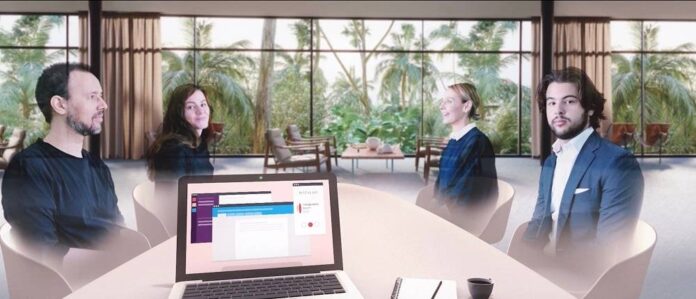Several European mobile operators have joined forces to develop a communications platform based on holograms. — Picture courtesy of Matsuko via ETX Studio
Follow us on Instagram, subscribe to our Telegram channel and browser alerts for the latest news you need to know.
PARIS, Sept 28 — The French mobile operator Orange, together with Germany’s Deutsche Telekom, Spain’s Telef?nica and the UK’s Vodafone have joined forces with the Matsuko startup to develop a European platform for holographic communications. The idea is for callers to be able to appear in hologram form, either in a real or entirely virtual environment.
The aim of these four operators is to offer immersive 3D experiences to their home and business customers in the coming years, thanks in particular to advances in communications networks. Indeed, a high-speed, low-latency network like 5G makes it possible to create and manage smooth, seamless holograms, opening up a whole range of potential uses in the metaverse.
A first pilot project should allow a few customers to embark on this kind of holographic communications session. As such, a person equipped with a 5G smartphone would be able to film themselves and appear to their counterparts in the form of a real-time, 3D holographic image processed by a 3D rendering algorithm. This hologram can then appear, move and interact either in a real environment, such as a meeting room, or in an entirely virtual setting. However, for the moment, the result can only be viewed through augmented reality glasses or virtual reality headsets.
Once this test phase is complete, the operators will continue to hone the technology and expand the scope of its uses. Eventually, the alliance hopes to develop applications proposing different forms of interactions, whether person-to-person or in small groups. The result will also be able to be seen (and no less spectacularly) via any other device supporting augmented reality, without necessarily needing a dedicated headset.
This experience should allow companies to communicate in an original way with their customers. Consumers, meanwhile, will be able to enjoy new immersive experiences with friends and family.
This type of technology is gaining interest all around the world. In 2021, in the United States, Google presented its vision of 3D videoconferencing of the future, called Starline. This project seeks to bring together families, friends or colleagues in 3D in the same space, wherever they are in the world. Google is currently experimenting with Starline in its offices, albeit with cumbersome and expensive equipment, but the goal is to be able to offer a much more affordable solution, mainly for companies or organisations.
In recent years, various experiments have been carried out using holograms, notably in the field of entertainment, with shows featuring holograms of singers of yesteryear (ABBA) or even those no longer alive (Tupac or Roy Orbison), for example. — ETX Studio


